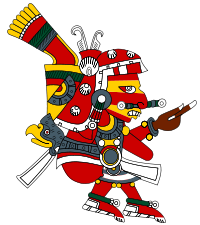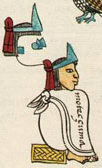
It doesn’t seem very difficult or interesting to see why book names change in the Book of Mormon. Nephi writes the book of Nephi. Jacob writes Jacob. Enos writes Enos. The book names change when there is a new prophet, right? Yes and no. Yes when we are speaking of most of the books that were part of the small plates of Nephi. No for the Book of Mormon that Mormon actually conceived and edited. Our Book of Mormon is wonderful but it isn’t the book Mormon intended that we have. The material we have from Nephi to Words of Mormon were added to replace what we lost of Mormon’s work. Joseph Smith indicated that the lost 116 pages comprised the book of Lehi.1 Mormon’s work, as originally conceived, would have been:
• Lehi • Mosiah • Alma • Helaman • Nephi (our 3 Nephi)2 • Nephi (our 4 Nephi) • Mormon3
Mormon took his record from the large plates of Nephi rather than the small plates account. Mormon’s book clearly still had names of people associated with the books, but they don’t fit the pattern of author/book-name. Many books contain the records of several important people4:
• Lehi: Lehi, Nephi, and unknown authors until the reign of Mosiah. This covers a period of nearly 400 years. • Mosiah: Mosiah1, Benjamin, Mosiah2, Alma the Elder • Alma: Alma the Younger, Helaman2 • Helaman: Helaman3, Nephi2
Clearly the book names do not change based on the writer or prophet associated with the book. On what principle do they change? Important information comes from the transition between the book of Alma and the book of Helaman. The book of Alma contains the writings of Alma2 (but not Alma1) and Helaman2. The book of Helaman starts with Helaman3. In Alma 63:11 we learn that the plates have been given to Helaman3. In Helaman 2:2 we learn that Helaman3 is appointed to sit as chief judge. His father was not a sitting chief judge, although his grandfather (Alma the Younger) had been. Alma the Younger had relinquished the judge seat to devote his efforts to preaching the gospel. He had the records and took them with him. When his son, Helaman2, received the plates, they were outside of the political line. When the new book begins with Helaman3, it is a new book in the hands of a new lineage of sitting judges. This suggests the hypothesis that the change in book names is related to the shift in the ruling lines.
Does the theory hold up?
The first book of the large plates was the book of Lehi. Nephi indicated that those plates contained “an account of the reign of the kings” (1 Nephi 9:4). After Nephi there were other kings who received the throne name of “Nephi” (Jacob 1:11), so we must suppose that the large plates contained the records of these “Nephies.” Even though we don’t have the 116 lost pages, we do know that the book of Lehi continued until the next named book, which is Mosiah. What happens between the book of Lehi and Mosiah? Omni 1:12-14 tells us that Mosiah1 flees the City of Nephi with the plates and becomes king in Zarahemla. He is a new king in a new place. He is the founder of a new dynasty and therefore begins a new book in his name.
The transition from the book of Mosiah to the book of Alma is another change in political lineage. Mosiah2’s sons refused the kingship and the monarchy is replaced by a system of judges. The book of Alma begins not with the first Alma, but with the first of the new line of rulers as Alma the Younger becomes the first chief judge. The political line doesn’t last long as Alma2 gives up the chief judge seat and dedicates himself to preaching (Alma 5:15-17). He took the record with him. His son, Helaman2, continues to write in his father’s book.
The transition from Alma to Helaman has already been noted as a change of political line as the records re-entered the hands of the sitting judge. In the book of Helaman, the Gadianton robbers seize the government and the sitting Nephite chief judge, Nephi2 the son of Helaman3, flees and takes the record with him. As with Alma the Younger and Helaman2, the record has moved out of the political line. By the time we arrive at 4 Nephi the record and the rulership have been reunited in the person of Nephi4. This is a change of both location and dynasty after the Gadianton usurpation and therefore represents a new book. Mormon receives the records after a period of political discord so severe that the last record keeper hid away the plates until such time as Mormon was ready for them (4 Nephi 1:48-49).
The shift from 4 Nephi to Mormon may also be seen as a significant shift in the transmission line of the plates, although not one of ruling dynasty. This leaves us with the shift from Helaman to 3 Nephi. The record is already out of the hands of ruling line and is kept by Nephi2. There is no indication that Nephi2’s position in the government changes at the beginning of this record. This book change is an exception to the rule of changing dynasties. However, this book does not come from the large plates of Nephi, but takes its name from a different record. Mormon indicates that he takes this account from the personal record of Nephi2 (3 Nephi 5:8-10).
Since Mormon is following the book names of his source plates, it is logical that he would also follow the name of the record from which he took the account we have as 3 Nephi. The book names change because they change in Mormon’s source. When that source is the large plates of Nephi, which were the more political record, they change according to the possession of those plates by a newly seated ruler. 1 Book of Mormon (reprint 1830, Independence, MO: Herald Heritage Reprint, 1970), 1. 2 Mormon certainly would not have named this “3 Nephi” simply because our books of 1 and 2 Nephi were not included. What we have as the third book of Nephi would have been the first to appear in Mormon’s text. The evidence from the 1830 edition tells us that none of the Nephi’s was identified by a number.
In Mormon’s work, they are identified by genealogy: “The book of Nephi, the son of Nephi which was the son of Helaman,” and “The book of Nephi, which is the son of Nephi, one of the disciples of Jesus Christ.” 3 The book of Moroni is clearly an addition to Mormon’s record. Moroni finishes his father’s work by completing the book of Mormon. His pseudonymous book is his own addition and not one his father conceived. 4 I use the subscript to clarify different people of the same names. The first Helaman is a son of Benjamin as recorded in Mosiah 1:2. Helaman the son of Alma is therefore indicated as Helaman2.





Problem: Objectively speaking one must have a original language manuscript base to analyze from in order to do the type of analysis that Mr. Gardner is engaging in here.
Of example one can engage in manuscript analysis -even criticism – of Biblical books because there’s a broad base of original (even secondary) language manuscripts to analyze from that EVEN crosses several generations of reproduction.
With the book of Mormon we have nothing but a sampling of the 19th Century translator’s proof and pre-press manuscripts of the translation FROM the alleged original language (Reformed Egyptian) manuscripts into English.
Unless something has changed, the original language manuscripts (in this case plates) are still M.I.A. putting this type of analysis on a par with assessing whether “The Screwtapes Letters” accurately reflect the original “Devilish” (yes, I made that up as a rhetoric point) that the translator (C.S. Lewis) translated them from or not.
Am I wrong?
Sounds right to me.
Thanks Brent. You know I’ve been thinking about it and to make the same point in a more humorous way . . .
This author’s analysis has led him to conclude that Pilgrim’s original title for “Pilgrim’s Progress” was most likely “Pilgrim’s Jolly Jaunt” and Screwtape’s original title for “The Screwtape Letters” was clearly intended to be “Cooking with (and Dining on) Wormwood”.
However, and sadly, their sloppy translators (Bunyan and Lewis) added English words to the words and colloquiums in Reformed Destruction and 20th Century Devil (respectively) that didn’t translate well using “tight” translation techniques – thus missing the author’s original desires and intentions, not to mention the subtle nuance of the original tongue.
And don’t EVEN get me started on what Tolkien did with the original Hobbiton and Elvish tongues in his translations of their ancient works! What a gawd awful mess of a translator that bloke was!
I don’t see any logical problem in Gardner’s arguments being based on a both a textual analysis of the BOM along with the sequencing in which the BOM was written, since we have the actual manuscripts that support the BOM we have was not produced by JS chronologically. And there are lots of interesting and valuable things that can be reasoned from the original manuscripts that have been altered to variations in editing. I think Brant did an excellent job illustrating such one. I realize that you most likely don’t like the fact that he speaks of Mormon as actual person, but whether he is a real person or not is beside the point because all we have is the character Mormon in the plates and so that is all we can go on.
excellent insight, Brant…
Interesting take on the book’s structure. Thanks.